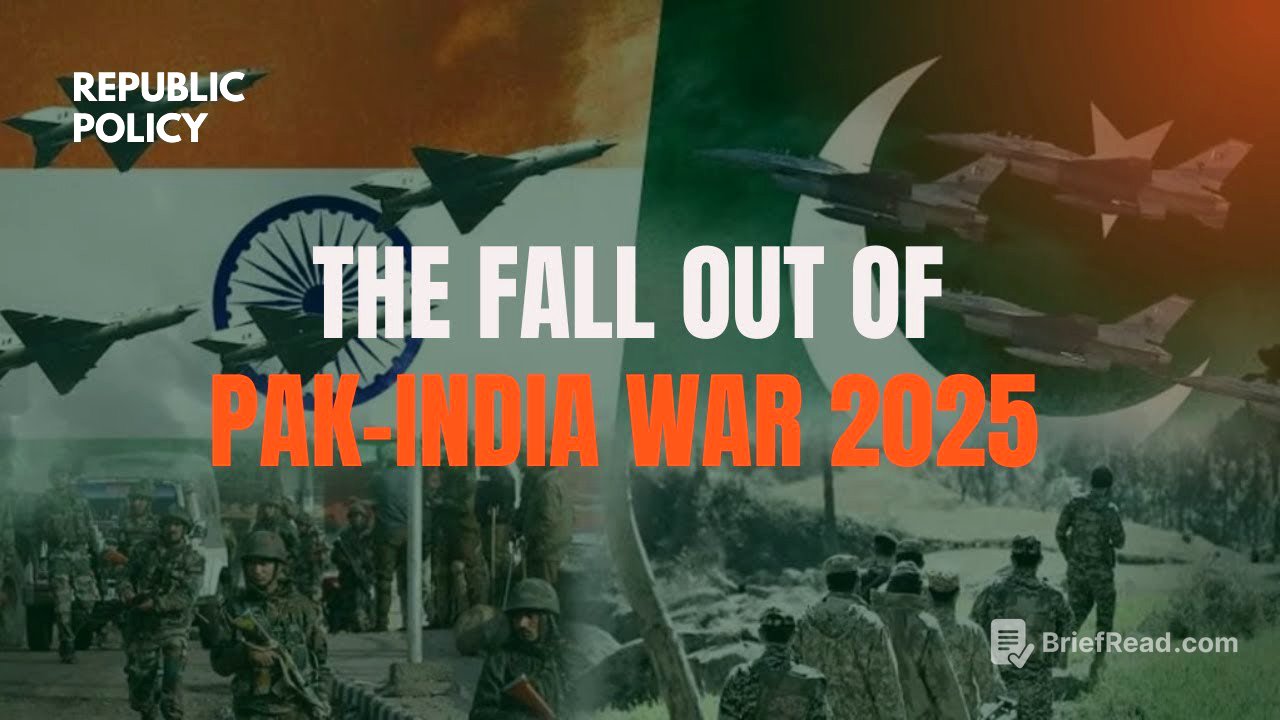TLDR;
This video features a discussion about the recent limited war between Pakistan and India, its immediate and long-term impacts, and potential future strategies for Pakistan. The speakers analyze the reasons behind India's actions, the role of media and social media, the political unity in Pakistan during the conflict, and the military aspects of the situation.
- India's miscalculations and media propaganda backfired, boosting Pakistani national unity.
- Pakistan's social media played a crucial role in defending the country internationally.
- Pakistan demonstrated strength in conventional warfare, challenging the narrative of Indian dominance below the nuclear threshold.
Introduction [0:00]
The video introduces a discussion about the recent limited war between Pakistan and India. The discussion aims to analyze the immediate and long-term impacts of the conflict and explore potential future strategies for Pakistan. The speakers emphasize that wars have both immediate and far-reaching consequences, affecting generations and spanning decades.
Reasons Behind India's Actions [1:14]
The speakers discuss the reasons behind India's decision to act without proper investigation into the Pahalgam attack. They highlight a pattern of India pressuring Pakistan after attacks, whether genuine or false flag operations, to limit Pakistan's influence and strategic interests, including economic and cultural ones. This is seen as an ongoing cultural issue between the two nations, rooted in religion and dating back centuries.
Political Impact and National Unity [3:14]
The discussion shifts to the political impact of the conflict, noting that India's intended goals backfired. Instead of exploiting perceived divisions in Pakistani society, the war united the nation and rekindled a sense of patriotism. Despite prior political polarization, all political parties in Pakistan behaved responsibly, demonstrating unity on matters of national defense.
Role of Media and Social Media [3:46]
The speakers analyze the role of media, contrasting the Indian media's propaganda and the relatively more responsible approach of Pakistani media. They emphasize the significant role of Pakistani social media in uniting and defending the country internationally. While the Indian media faced backlash for spreading misinformation, Pakistan's information system was more disciplined and responsible.
Capitalizing on National Unity [10:11]
The discussion explores how Pakistan can capitalize on the newfound national unity and pride. The speakers note a significant increase in nationalistic sentiment among Pakistani youth, reversing a previous trend of wanting to leave the country. The challenge now is for Pakistan to leverage this unity and confidence for long-term benefit.
Public Response and Confidence [11:31]
The speakers highlight the remarkable confidence and lack of panic among the Pakistani public during the attacks. Despite numerous drone incursions and missile attacks, life continued as normal, demonstrating the nation's resilience. This response is contrasted with the hateful reaction observed in India.
Military Analysis and Achievements [13:55]
The discussion shifts to a military analysis of the conflict, commending the Pakistani forces for their performance. Pakistan successfully challenged the narrative of Indian dominance below the nuclear threshold by demonstrating strength in conventional warfare. The Pakistan Air Force (PAF) is recognized internationally as a dominant force, successfully intercepting Indian drones and countering missile technology.
